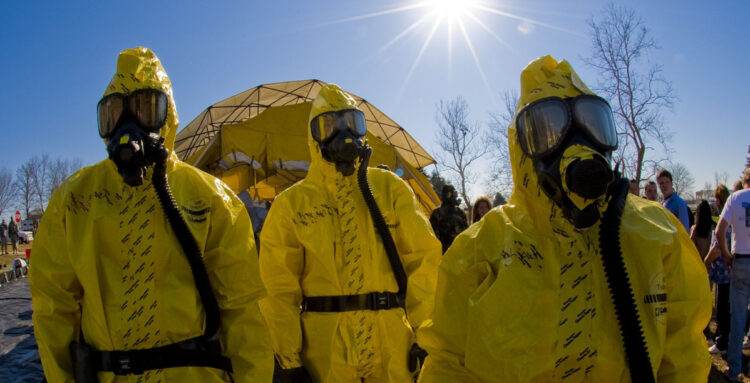A mysterious illness has killed more than 50 people in the Democratic Republic of the Congo, according to the World Health Organization (WHO).
The announcement came on Monday (Feb 24). What’s terrifying is how quickly it’s taking lives — most victims didn’t even survive 48 hours after symptoms showed up.
Serge Ngalebato, medical director at Bikoro Hospital, said the speed of it is “really worrying.”
The outbreak started after kids ate a bat
WHO says this outbreak started on January 21 in Boloko, a town in the northwest. It began after three kids ate a bat. Within 48 hours, all three were dead, showing signs of hemorrhagic fever.
A second outbreak appeared in another town
Then, on February 9, another outbreak was recorded in Bomate. So far, 419 cases have been reported, and 53 people have died from this unknown disease.
Ebola and other common diseases ruled out
On February 9, samples from 13 cases were sent to the National Institute for Biomedical Research in Kinshasa for testing.
WHO confirmed that none of them tested positive for Ebola or any of the usual hemorrhagic fever diseases like Marburg.
Some tested positive for malaria
A few samples did test positive for malaria. Malaria is a mosquito-borne disease that can be deadly and usually causes fever, fatigue, vomiting, and headaches.
Diseases jumping from animals to humans are on the rise
WHO reported in 2022 that the number of diseases spreading from animals to humans has jumped by 60% over the past decade.
Ebola and other hemorrhagic fevers made up 70% of those cases, along with diseases like monkeypox, dengue, anthrax, and plague.
Urbanization is making outbreaks worse
Africa has the fastest-growing population in the world, and as cities expand into areas where wildlife used to be, diseases that once stayed in small villages can now spread fast.
With more people traveling, outbreaks can move beyond Africa and reach other parts of the world.
Coronaviruses are zoonotic too
Coronaviruses are also zoonotic, meaning they spread between animals and humans. The SARS-CoV-2 virus, which caused COVID-19 and killed 7 million people, is believed to have come from animals sold at a market in China.
Health officials warn that urgent action is needed
“We need all hands on deck to prevent and control zoonotic diseases such as Ebola, monkeypox, and even other coronaviruses,” Dr. Moeti said in the WHO report.
“Zoonotic diseases happen when infections spill over from animals to humans. The only way to fight them is by working together across different fields. With better transportation in Africa, zoonotic pathogens can now reach big cities faster than before.”
“We have to act now to stop zoonotic diseases before they spread widely and turn Africa into a hotspot for new infectious diseases.”
The 2013 Ebola epidemic is a warning
The 2013 Ebola outbreak in West Africa is a grim reminder of how bad things can get. Once the virus hit major cities, it spiraled out of control, killing over 10,000 people. Scientists believe it started with infected fruit bats passing the virus to humans.
The first cases appeared in Guinea in December 2013, then spread to Liberia and Sierra Leone. There were also secondary infections in the U.S. and Spain, along with isolated cases in Senegal, the UK, and Italy.
Another deadly illness last year was linked to malaria
Just last year, a mysterious flu-like illness spread through southwest Congo, killing dozens. In the end, WHO determined it was most likely malaria.
WHO director Tedros Adhanom Ghebreyesus reported that 416 cases were recorded, with 31 people dying in hospitals.
Could this spread beyond Africa?
Right now, there’s no evidence this illness has moved outside the affected areas. But experts warn that with modern travel, diseases can spread faster than ever.
If this turns out to be something highly contagious, it could pose a serious risk beyond Africa’s borders. For now, all eyes are on Congo as they try to figure out what they’re dealing with.



















































